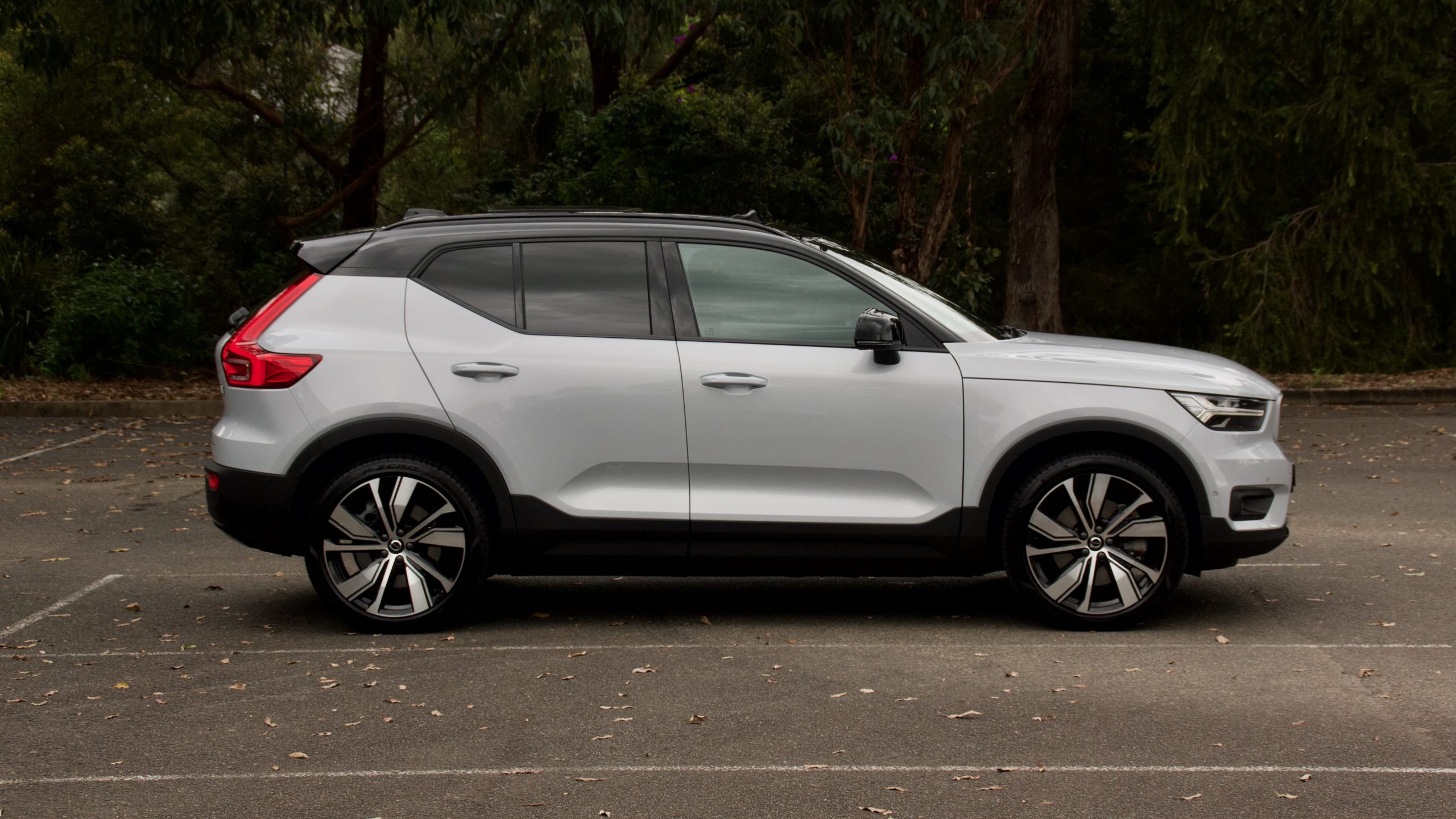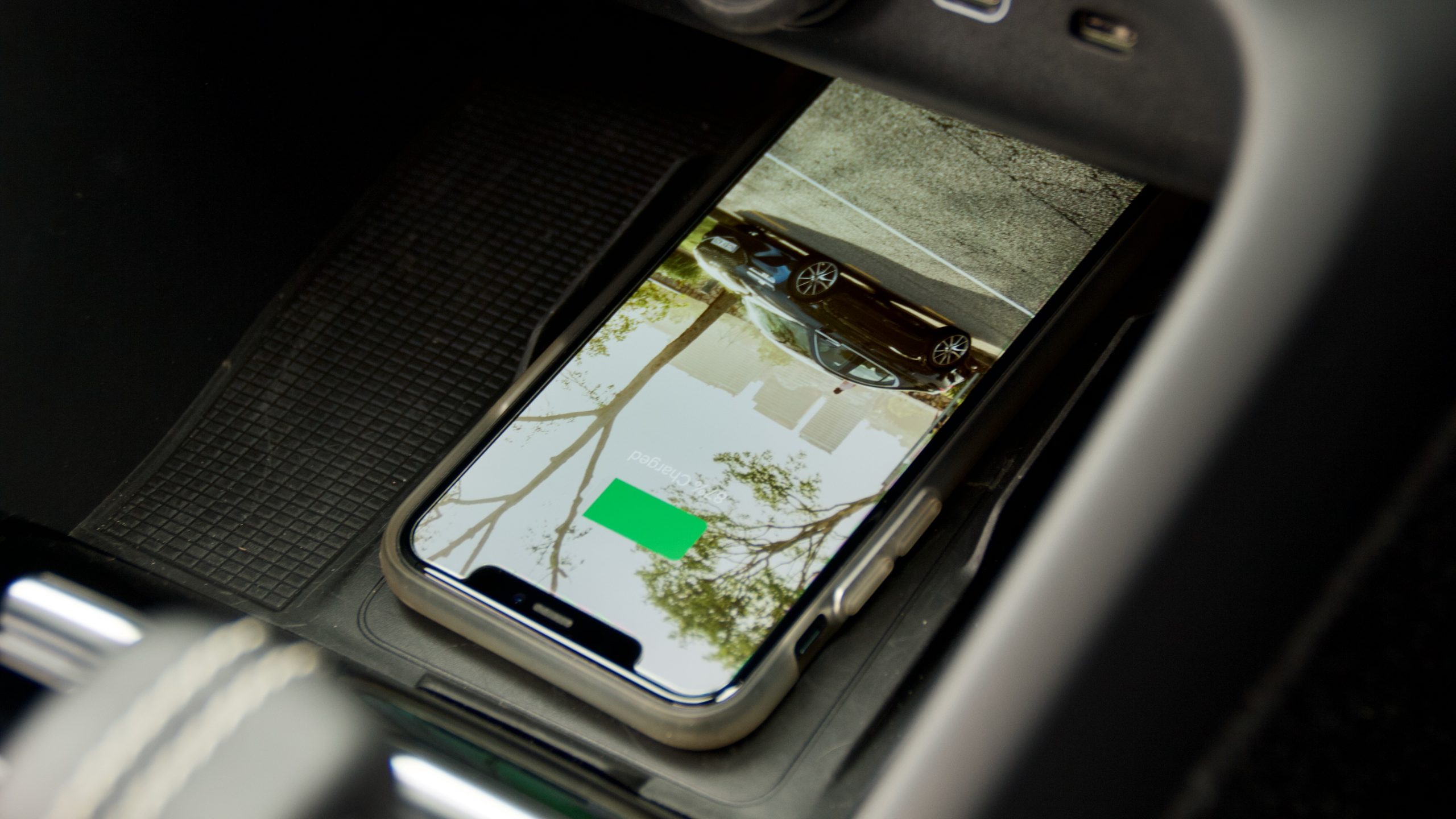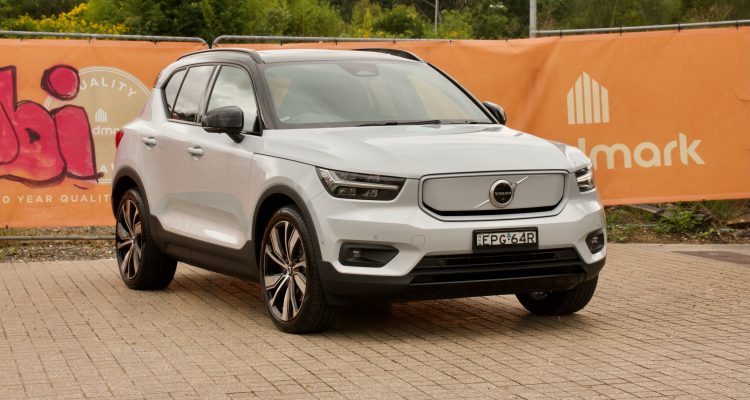- Strong performance for a 2,185kg electric SUV
- Almost as spacious and practical as the regular XC40
- Long service intervals helps convenience
- It feels heavy and rides harsher than normal XC40
- Centre screen needs reception to work properly
- EV6 and Ioniq 5 charge quicker and have more range
Swedish car manufacturer Volvo is undergoing a big transformation in turning into one of the world’s greenest car makers. It’s launching solely-electrified new models, making its factories carbon neutral and even removing leather from its products’ interiors. The latest product from Volvo is the all-electric XC40 Recharge Pure, which supposedly combines the best parts of Volvo’s highly successful small SUV with a quick and quiet electric drivetrain. What’s the 2022 Volvo XC40 Recharge Pure Electric like? Let’s find out.

The XC40 Recharge Pure Electric joins an increasing choice of all-electric models in the $70,000-$80,000 price range, including the Hyundai Ioniq 5, Kia EV6, Lexus UX300e, Polestar 2 (which shares a lot with the XC40 Recharge, including its platform and mechanicals), Tesla Model 3 and its incoming SUV brother, the Model Y. There’s lots of choice, and only more due in the future, including the coupe version of the XC40, which is called the C40.
Price & Equipment: 8/10
Priced at $76,990 plus on-road costs (around $82,000 drive away), the 2022 Volvo XC40 Recharge Pure Electric is not cheap to buy, but it does represent good value in the electric SUV segment.




Standard equipment includes 20-inch wheels, all-LED lighting, auto lights and wipers, leather upholstery, powered front seats with memory functionality, heated front seats, a 12.3-inch digital driver’s display, a 9.0-inch portrait touchscreen with Android Automotive, Google Maps navigation, digital radio, wireless phone charging, keyless entry and start, heated and auto-folding mirrors, an electric tailgate with kick-to-open functionally, a panoramic sunroof and a 12-speaker Harman Kardon sound system.
Standard safety equipment includes seven airbags, auto emergency braking (AEB) with pedestrian and cyclist detection, intersection assist with braking, blind-spot monitoring with rear cross-traffic alert, lane keep assist with lane trace assist, adaptive cruise control with stop and go functionality, front and rear parking sensors, auto high beam, a 360-degree parking camera, rear auto braking, driver attention monitoring and road sign recognition.




Unlike other Volvo models, all the available colours on the XC40 Recharge Ultimate are no-cost options and include ‘Sage Green’, ‘Bright Dusk’ (beige-gold), ‘Fjord Blue’, ‘Thunder Grey’, ‘Onyx Black’, ‘Black Stone’ and our test car’s ‘Crystal White’. The sole interior option is black.
There are an increasing amount of rivals to the XC40 Recharge, including the $67,990 plus on-road costs Kia EV6, $71,900 +ORC Hyundai Ioniq 5, $74,000 +ORC Lexus UX300e and incoming $68,900+ORC Tesla Model Y. Like a lot of those rivals, the XC40 Recharge is fully equipped with no options to choose from, even colour, and because of that, we think it’s reasonably good value in the electric SUV segment – even priced at over $80,000 once on-road costs are included in the price.




A good example of the Volvo’s value in comparison to rivals is the Lexus UX300e Luxury, which is priced from around $83,000 drive away and while it has features like ventilated front seats, a heated steering wheel and a power-adjustable steering column, it has half the performance of the Volvo (150kW/300Nm), smaller wheels, fake leather trim (not real), no sunroof, no 360-degree parking camera and it’s a smaller car.
Performance & Economy: 8/10
Under the body of the XC40 Recharge Pure Electric is a 78kWh battery which sends its power to both the front and rear axles with electric motors at each end. With total outputs of 300kW of power and 660Nm of torque, the 2022 Volvo XC40 Recharge Ultimate’s performance is brisk. With a claimed 4.9-second 0-100km/h sprint time, the XC40 is more than capable of pushing you into the seat and it actually feels quicker than that claim.




According to Volvo, the XC40 Recharge Ultimate has a range of 418km on the WLTP cycle and in our testing, we achieved 350km from a full charge. That’s because the electric XC40 is, like its petrol-powered siblings, not all that efficient – Volvo claims 25.5kWh/100km, which is more than the all-wheel drive Kia EV6’s 18kWh/100km rating.
The XC40 Recharge’s peak charging speed is 150kW, and charging from 0 to 80 per cent using a DC fast charger will take around 40 minutes – as with all other EVs, to conserve the battery, the last 20 per cent takes a lot longer. Using a more common 50kW charger will take around two hours to charge and using a wall socket will take around 22 hours. The XC40 Recharge uses a CCS2 type charger.




Against the Kia EV6 and Ioniq 5, the XC40 Recharge’s peak 150kW charging seems slow – the South Korean twins can charge at up to 350kW and a 0 to 80 per cent charge happens in as little as 18 minutes. The EV6’s peak range is an impressive 528km for the entry-level Air as well, proving that there’s further work for Volvo to do with the XC40’s charging and range. But the XC40 Recharge’s drivetrain is still impressively punchy and also quite refined.
Ride & Handling: 8/10
Based on the same ‘CMA’ platform as the regular XC40, the 2022 Volvo XC40 Recharge is more than pleasing to drive with the only major difference over the regular XC40 being added weight – 448kg over the already heavy XC40 T5, to be exact. This means that the XC40 Recharge does have a few compromises over a car sitting on a dedicated EV platform – like the transmission tunnel and the boot, which is a bit smaller than the petrol-powered XC40. But on the whole, the Recharge drives remarkably similarly to the regular XC40.




Around town, the XC40 Recharge’s ride quality can be a bit sharp thanks to the large 20-inch wheels and porky weight. Lower speed bumps and potholes can be felt abruptly through the steering wheel, but at higher speeds, the ride quality is excellent with a well-judged mix of firmness and body control.
Unlike a lot of other electric vehicles, the XC40 Recharge doesn’t offer different driving modes, nor can you adjust the regenerative braking through multiple stages. It’s just either normal mode or you can activate one-pedal mode, which sets the regenerative braking to 100 and any time you’re not using the throttle, the car is braking. Around town, it works quite well but using it on highways can be quite alarming as it decelerates as quickly as it accelerates.




Dynamically, the XC40 Recharge is a positive story. It doesn’t feel as light on its feet as the Kia EV6, but it’s still entertaining to drive thanks to well weighted steering and grippy Pirelli P-Zero tyres – fun fact: they were developed specifically for the XC40 Recharge and feature a cute ‘VOL’ stamping on them. The all-wheel drive system is also great, and despite the massive power and torque on offer, handles big throttle stamps with ease.
Interior & Practicality: 9/10
The interior of the 2022 Volvo XC40 Recharge Ultimate is largely identical to the regular XC40, except for the new Android Automotive infotainment system that’s due on the rest of the XC40 range later this year. That means it’s very practical, spacious, high quality and very ergonomic.

The quality inside the XC40 Recharge is excellent thanks to liberal use of soft touch materials, high quality leathers, crisp screens and solid build quality. It’s also very practical with huge door bins, a large centre console box with a separate bin section, a big cubby hole ahead of the gearbox with a wireless phone charger, reasonable cup holders and a reasonable glovebox with a hook for holding a bag.
Centre of the XC40 Recharge’s cabin is a 9.0-inch touchscreen with Android Automotive software. That means that the screen uses a Google system, and it is also used in the XC60 SUV for now, though it’s due to migrate to the rest of the Volvo range before the end of 2022. It’s quite easy to use and the screen quality is good as well, though if you’re not within reception range, it’s not great because it uses a SIM card for data (of which you get five years’ unlimited of), and without reception, not all of the features are available. The system was a touch slow in our test car as well.




Designed by Google, the same ‘hey Google’ voice control as Android phones is used here, and it has a greater range of info than regular voice control. The satellite navigation also uses Google Maps – including live traffic – which is excellent, while there are a growing amount of applications that you can download, like Spotify. There’s no Apple CarPlay as yet, but it’s coming soon. The Harman Kardon sound system is also great, providing thumping bass levels.
The rear seat in the XC40 Recharge is excellent for a small SUV, with great leg- and head-room – despite the standard panoramic sunroof – on offer, as well as map pockets, deep door pockets, air vents and two charging ports.




The bootspace on offer in the XC40 Recharge measures 418-litres, which is 42L less than the petrol XC40 and 142L less than the Hyundai Ioniq 5. But there’s also a 31L front boot, while folding the rear seats unlocks 1,373L in total of space, and when the seats are folded, they lie completely flat. The boot offers a few hooks and clever storage solutions, though no spare wheel.
Service & Warranty: 9/10
Like other new Volvo cars, the XC40 Recharge comes with a five-year/unlimited km warranty with eight years of warranty for the battery and high-voltage parts. Service intervals are either once every two years or every 30,000km, whichever comes first, and three years of servicing is included with the price – a longer five-year service pack is available but Volvo is yet to announce pricing for that. Because the drivetrain is ‘sealed for life’, there are no serviceable components aside from other fluids, brakes and filters.

In comparison, the Tesla Model Y has a four-year warranty with an eight-year battery warranty, the Hyundai Ioniq 5 has the same five-year warranty with eight years of battery warranty and the Kia EV6 has seven years of warranty with the same eight years of battery warranty. Servicing the EV6 over five years costs just $1,088, while the same time period in the Ioniq 5 costs $1,684.
The 2022 Volvo XC40 Recharge Pure Electric DiscoverAuto Rating: 8.4/10
The 2022 Volvo XC40 Recharge Pure Electric is a great electric SUV that manages to combine the best bits of the XC40 – like its great packaging, excellent practicality, solid driving dynamics, great build quality and awesome spaciousness – with traits that we’ve come to expect from electric cars like great performance, cheap service costs and, of course, no tailpipe emissions.

Of course, it’s not perfect. While it offers stonking performance, with a maximum charging rate of only 150kw, its charging capabilities could be improved. The electric parts have also added almost 500kg to the XC40’s weight, which has impacted the car’s ride quality and it can be somewhat brittle around town. Finally, we think the Android Automotive infotainment system could use work as it can be slow and without reception, many of its features aren’t available. But on the whole, the XC40 Recharge – just like its petrol sibling – is a solid product that needs to be on your test drive list if you’re searching for an electric SUV.

Leave a Reply